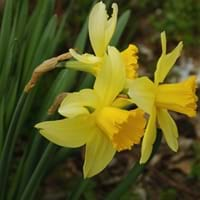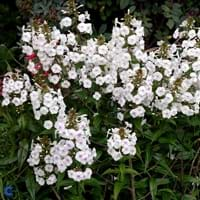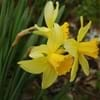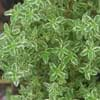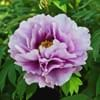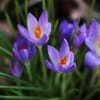Life Span
Perennial
Perennial
Type
Bulb
Flowering Plants
Origin
Asia, Central Asia, Eastern Asia, Southwest Europe
United States, Northeastern United States, Mid-Atlantic United States, Southeastern United States, Central United States, South-Central United States
Types
Accent, Acropolls, Cassata,Dellbes, Flower parade, Hawera
Not Available
Number of Varieties
Not Available
Habitat
Hillside, Open scrub, River side, Rocky areas, Scrubs, Woods
Loamy soils, meadows, moist forests
USDA Hardiness Zone
3-9
5-8
Sunset Zone
A2, A3, 1a, 1b, 2a, 2b, 3a, 3b, 4, 5, 6, 7, 8, 9, 10, 11, 12, 13, 14, 15, 16, 17, 18, 19, 20, 21, 22, 23, 24
1a, 1b, 2a, 2b, 3a, 3b, 4, 5, 6, 7, 8, 9, 10, 11, 12, 13, 14, 18, 19, 20, 21, 22, 23
Habit
Clump-Forming
Upright/Erect
Flower Color
Ivory, Lemon yellow, Peach, White, Yellow, Yellow green
White, Pink, Lavender, Violet
Flower Color Modifier
Bicolor
Bicolor
Fruit Color
Not Available
Not Available
Leaf Color in Spring
Green
Green, Dark Green
Leaf Color in Summer
Green
Dark Green
Leaf Color in Fall
Green
Dark Green
Leaf Color in Winter
Green
Not Available
Plant Season
All year
Summer
Sunlight
Part sun
Full Sun, Partial Sun, Partial shade
Growth Rate
Medium
Medium
Type of Soil
Clay, Loamy, Sandy
Clay, Loam
The pH of Soil
Acidic
Acidic, Neutral, Alkaline
Soil Drainage
Well drained
Average
Bloom Time
Early Spring, Late Spring, Spring
Early Summer
Tolerances
Black Walnut Toxicity
Not Available
Where to Plant?
Ground
Container, Ground
How to Plant?
From bulbs
Seedlings, Transplanting
Plant Maintenance
Medium
Medium
Watering Requirements
It cannot sustain wet-feet, Keep the ground moist but not water-logged, Water Deeply, Water when soil is dry
Do Not over Water, Keep ground moist
In Summer
Lots of watering
Lots of watering
In Spring
Moderate
Moderate
In Winter
Average Water
Average Water
Soil pH
Acidic
Acidic, Neutral, Alkaline
Soil Type
Clay, Loamy, Sandy
Clay, Loam
Soil Drainage Capacity
Well drained
Average
Sun Exposure
Part sun
Full Sun, Partial Sun, Partial shade
Pruning
Cut or pinch the stems, Prune to control growth, Remove dead leaves, Remove dead or diseased plant parts
Remove damaged leaves, Remove dead branches, Remove dead leaves
Fertilizers
All-Purpose Liquid Fertilizer
All-Purpose Liquid Fertilizer, Apply 10-10-10 amount
Pests and Diseases
Basal rot, Crown rot, Fire, Leaf spot, Scorch, Viruses
Leafhoppers, Pink Root, Powdery mildew, Red blotch
Plant Tolerance
Drought
Drought
Flower Petal Number
Single, Double
Single
Foliage Texture
Medium
Medium
Foliage Sheen
Matte
Glossy
Attracts
Not Available
Hummingbirds, Butterflies
Allergy
Asthma, Rhinoconjunctivitis
allergic conjunctivitis, breathing problems, Irritate the mucus membrane
Aesthetic Uses
Showy Purposes
Beautification, Cottage Garden
Beauty Benefits
Not Available
Improve skin tone, Restores Hair Colour, Skin cleanser
Environmental Uses
Air purification
Air purification, Increases moisture in air, Prevent Soil Erosion
Medicinal Uses
Asthma, Cold, Cough, Vomiting
Aging, Antispasmodic
Part of Plant Used
Flowers, Leaves
Leaves
Other Uses
Showy Purposes
Air freshner, Cosmetics, Making Sweet Scented Oil
Used As Indoor Plant
No
No
Used As Outdoor Plant
Yes
Yes
Garden Design
Not Available
Cutflower, Mixed Border
Botanical Name
Narcissus
PHLOX maculata
Common Name
Daffodil
Meadow Phlox
In Hindi
हलका पीला
मैदानी एक प्रकार का पौधा
In German
Narzisse
Wiese Phlox
In French
Jonquille
Meadow Phlox
In Spanish
Narciso
prado Phlox
In Greek
ασφόδελος
Meadow Phlox
In Portuguese
Abrótea
Meadow Phlox
In Polish
żonkil
łąka Phlox
In Latin
Asphodelus
Phlox meadow
Phylum
Magnoliophyta
Magnoliophyta
Class
Liliopsida
Magnoliopsida
Order
Asparagales
Solanales
Family
Amaryllidaceae
Polemoniaceae
Clade
Angiosperms, Monocots
Not Available
Tribe
Narcisseae
Not Available
Subfamily
Amaryllidoideae
Not Available
Number of Species
Not Available
Season and Care of Daffodil and Meadow Phlox
Season and care of Daffodil and Meadow Phlox is important to know. While considering everything about Daffodil and Meadow Phlox Care, growing season is an essential factor. Daffodil season is All year and Meadow Phlox season is All year. The type of soil for Daffodil is Clay, Loamy, Sandy and for Meadow Phlox is Clay, Loam while the PH of soil for Daffodil is Acidic and for Meadow Phlox is Acidic, Neutral, Alkaline.
Daffodil and Meadow Phlox Physical Information
Daffodil and Meadow Phlox physical information is very important for comparison. Daffodil height is 1.25 cm and width 1.25 cm whereas Meadow Phlox height is 60.00 cm and width 38.10 cm. The color specification of Daffodil and Meadow Phlox are as follows:
Daffodil flower color: Ivory, Lemon yellow, Peach, White, Yellow and Yellow green
Daffodil leaf color: Green
Meadow Phlox flower color: White, Pink, Lavender and Violet
- Meadow Phlox leaf color: Green and Dark Green
Care of Daffodil and Meadow Phlox
Care of Daffodil and Meadow Phlox include pruning, fertilizers, watering etc. Daffodil pruning is done Cut or pinch the stems, Prune to control growth, Remove dead leaves and Remove dead or diseased plant parts and Meadow Phlox pruning is done Remove damaged leaves, Remove dead branches and Remove dead leaves. In summer Daffodil needs Lots of watering and in winter, it needs Average Water. Whereas, in summer Meadow Phlox needs Lots of watering and in winter, it needs Average Water.
